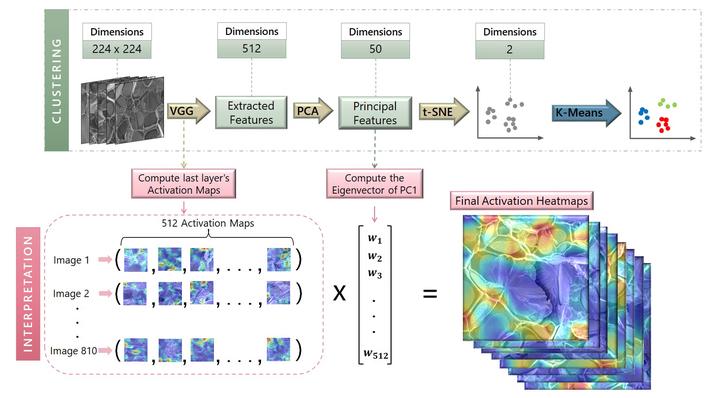
Abstract
Modern computer vision and machine learning techniques, when applied in Fractogra- phy bare the potential to automate much of the failure analysis process and remove human induced ambiguity or bias. Given the complex interaction between intrinsic (e.g. microstructure) and extrinsic (e.g. environment, loading history) factors leading to failure, deep learning methods, which exhibit very high efficiency in establishing complex interconnections between the input data, may end up revealing new correla- tions and information that is encoded onto the complex geometries of fracture surfaces and remained hidden from us so far. In this work, we examine the potential use of an unsupervised learning pipeline to classify fracture surfaces of five tungsten heavy alloys following their chemical content (i.e. Tungsten percentage). Encouraged by the success of the algorithms, we move on and analyze the features on the fracture surfaces which are governing the decision process of the algorithms. The fractographic interpretation of these features shows that the extent of plasticity on the fracture surface serves as a measure for the classification process. The examined pipeline can be used to identify failures originating from erroneous manufacturing processes, leading to locally varying Tungsten concentrations and ultimately premature failure.